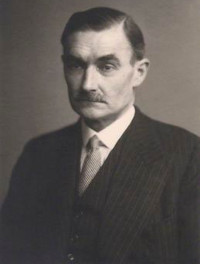“The Mathematician in Love,” by Scottish mechanical engineer William Rankine (1820-1872):
A mathematician fell madly in love
With a lady, young, handsome, and charming:
By angles and ratios harmonic he strove
Her curves and proportions all faultless to prove
As he scrawled hieroglyphics alarming.
He measured with care, from the ends of a base,
The arcs which her features subtended:
Then he framed transcendental equations, to trace
The flowing outlines of her figure and face,
And thought the result very splendid.
He studied (since music has charms for the fair)
The theory of fiddles and whistles,–
Then composed, by acoustic equations, an air,
Which, when ’twas performed, made the lady’s long hair
Stand on end, like a porcupine’s bristles.
The lady loved dancing:–he therefore applied,
To the polka and waltz, an equation;
But when to rotate on his axis he tried,
His centre of gravity swayed to one side,
And he fell, by the earth’s gravitation.
No doubts of the fate of his suit made him pause,
For he proved, to his own satisfaction,
That the fair one returned his affection;–“because,
“As every one knows, by mechanical laws,
“Re-action is equal to action.”
“Let x denote beauty,–y, manners well-bred,–
“z, Fortune,–(this last is essential),–
“Let L stand for love”–our philosopher said,–
“Then L is a function of x, y, and z,
“Of the kind which is known as potential.”
“Now integrate L with respect to d t,
“(t standing for time and persuasion);
“Then, between proper limits, ’tis easy to see,
“The definite integral Marriage must be:–
“(A very concise demonstration).”
Said he–“If the wandering course of the moon
“By Algebra can be predicted,
“The female affections must yield to it soon”–
–But the lady ran off with a dashing dragoon,
And left him amazed and afflicted.






